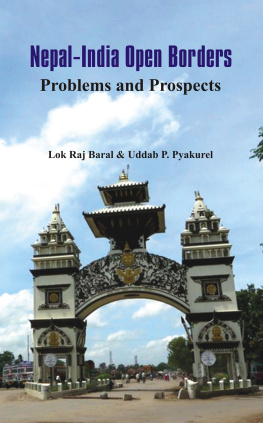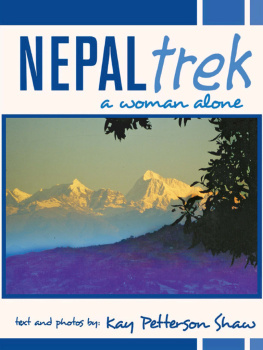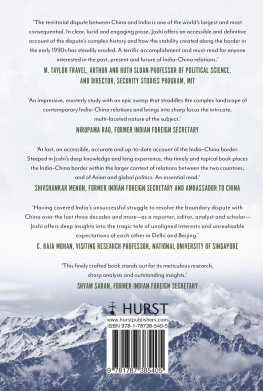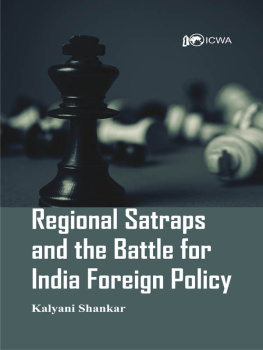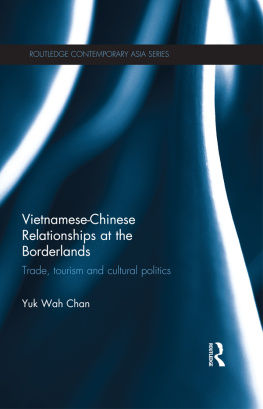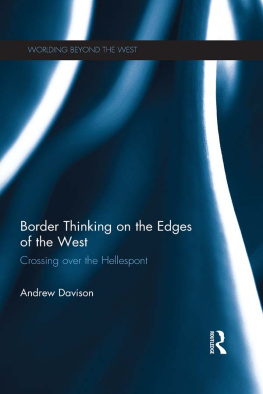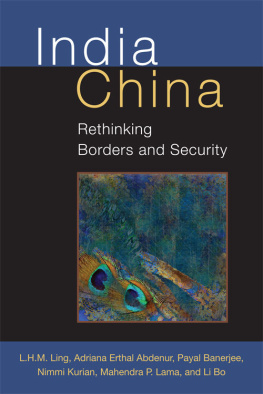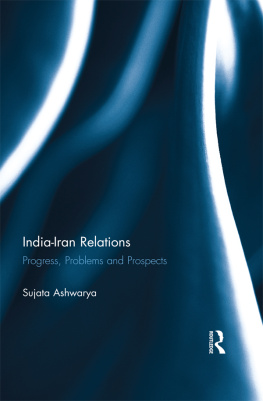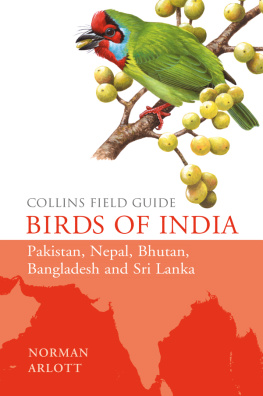Nepal India Open Border:
Problems and Prospects
Nepal India Open Border:
Problems and Prospects
Lok Raj Baral
Uddhab P. Pyakurel
Vij Books India Pvt Ltd
New Delhi (India)
Published by
Vij Books India Pvt Ltd
(Publishers, Distributors & Importers)
2/19, Ansari Road Delhi 110 002
Phones: 91-11-43596460, 91-11-47340674
Fax: 91-11-47340674
e-mail:
Copyright 2015, Authors
ISBN: 978-93-84464-86-8 (Hardback)
ISBN: 978-93-84464-92-9 (ebook)
All rights reserved.
No part of this book may be reproduced, stored in a retrieval system, transmitted or utilised in any form or by any means, electronic, mechanical, photocopying, recording or otherwise, without the prior permission of the copyright owner. Application for such permission should be addressed to the publisher.
The views expressed in the book are of the author and not necessarily those of the publishers.
Supported by B.P. Koirala India-Nepal Foundation
2015Contents
Acknowledgements
A Field-based study on Nepal-India open border arrangement was long over due. When this idea was raised with the former Indian ambassador to Nepal, Shri Jayant Prasad, he promptly accepted it and went into action during the B.P. Koirala India-Nepal Foundation (BPKF) Meeting in March 2011. Yet, the project was delayed to execute due to various reasons. We are happy that the study is complete within a stipulated period of fourteen months, two more months than the term fixed by the BPKF Board. Its main reason of delay was the availability of time of Researcher, coordinator and Advisers. Since it is entirely a field-based study, visits to the field needed suitable season.
According to the original plan, two researchers, one from India and one from Nepal, were supposed to work in the project but due to his own prior commitments and job conditions, Dr. Vinod K. Bhardwaj of Jaipur, could not spare his time. Dr. Uddhab P. Pyakurel, a Nepali scholar, who teaches Political Sociology at Kathmandu University and the coordinator Professor Lok Raj Baral had to work as a full timer. Both of them have visited the field freeing themselves from their regular engagement as teacher (Uddhab), and executive head of Nepal Centre for Contemporary Studies (NCCS). Other scholars who were involved for field works were Dr. Indra Adhikari, Prof. Binaya K. Kushiyait and Bijay Raj Pant.
Ambassador of India to Nepal, Jayant Prasad, Co-Chairperson of BPKF (now retired) in particular, deserves special thanks for his interest and quick action he took for providing fund to the execution of project as well as in accepting the names of advisors and research team. His successor Ranjit Rae continued the cooperative spirit by encouraging us to hold discussion events in Patna, Lucknow and New Delhi in addition to the five meetings held in Kakarbhitta, Birgunj, Kathmandu, Bhairahawa and Mahendranagar in Nepal. We are grateful to him for taking quick decision and action. The then Acting Nepali Ambassador, K.N. Adhikari, who acted as Co-Chairman of BPKF, and the members of Board, have cooperated by gladly supporting the proposal during the BPKF Board meeting.
The Deputy Chief of Mission, Mr. Jaideep Majumdar and Mr. Abhay Kumar, (First Secretary Press, Information and Culture) of the Embassy of India deserve thanks for their cooperation. In fact, Abhay Kumar has cooperated with the team by taking quick action for releasing fund when needed. Mr. Pankaj Mallik who handled the BPKF as local staff deserves thanks for his cooperation. The two Advisors, Former Director General of SSB (India), R.K. Shukla, and former Home Secretary of Nepal, Umesh P. Mainali, have encouraged the team by accepting our request to be advisers. The suggestions made by them during our first meeting in November 2012 were valuable. While making comments on the draft of the report, Mr. Shukla provided many inputs into the subject. The report is enriched with his suggestions. We are grateful to him for taking time to come to Kathmandu for our last meeting. Ishwor Kharel and Uttam Hachhethu of NCCS deserve appreciation for their role as local logistic managers. Finally, credit goes to all the respondents, especially the SSB (India) and the APF (Nepal) personnel, local administrators of both sides, journalists and civil society members we met and discussed during the field visits.
Chapter I : Background
Geography still counts. It counts in a strategic and tactical military sense, a political sense, and culturally defined territorial sense, and it counts in terms of the spatial distribution of resources, peoples, and physical systems .This statement is aptly correct in the context of India - Nepal Relations. Nepals overall relations with India have been more or less determined by geographical location of the country as it faces India (South Asia) with all commonalities of the countries of the Indian subcontinent. Now this region is called South Asia and the countries of the region are integral geographical parts. Among these countries, Nepal has not only unique relationship in multiple senses as geography has destined the two countries to be together.
Going back to history, from time immemorial, both migrants and indigenous peoples inhabited the lands belonging to the northern Gangetic plain and hills. Kathmandu valley, ruled by the Newars for centuries, had its distinct cultural heritage and identity with which the King of Gorkha was infatuated. Coming as he did from a small poor hilly principality, Prithvi Narayan shahs expansion began with the ambition of becoming a king of a big empire. As his empire building expedition went on becoming successful, he and his successors extended and expanded the territories in the East and West. After conquering the Kathmandu valley fully in 176869, he established himself as builder of modern Nepal. By the time Prithvi Narayan Shah died, the Gorkhali Empire was comprised the whole of the eastern and central Tarai, inner Tarai, the whole of Kathmandu valley, and the eastern hill region up to the Tista river bordering Sikkim, with the state of Jajarkot in the north-west as a vassal.
However, Nepals international boundary was officially delineated only in the eighteenth century. The empire building expedition started by King Prithvinarayan Shah of Gorkha of Western Nepal and continued by his successors came to a halt after the defeat in the Anglo-Nepal war of 1815. The Treaty of Sugauli, signed in 1815 and ratified in 1816, that accepts the dictated terms of the victor, could provide Nepal with a stable international border. Some territories were ceded in 1860 after the then Prime Minister, Jang Bahadur Rana (Kunwar), established himself as credible and reliable ruler. In fact, Jang had appeased the British by taking part in quelling the Sepoy Mutiny in 1857. The mutiny, started with the aim of overthrowing the British rule, failed. It not only provided a temporary relief to the British design but also helped stabilize the Raj without any resistance. Soon thereafter, the British rulers fixed the boundary by erecting pillars in the Eastern and the Southern borders, while the Western border was divided by the Kali (Mahakali) river.
In fact, relations between India and Nepal have been close since ancient times stemming from geographical location and common ethnic, linguistic and cultural identities that overlap the two countries. Such overarching, deep and complex relations have many things to do with the border which itself is unique and unparallel in the world. In other words, the open border regime that has been in existence from time immemorial has become the most distinguishing feature of India-Nepal relations.

